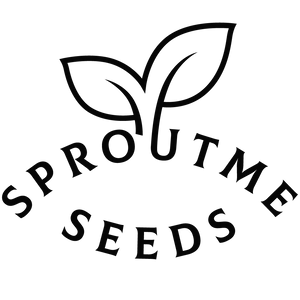Zone 8b
Zone 8b is defined by the USDA Plant Hardiness Zones as regions with average annual minimum temperatures ranging from 15°F to 20°F (-9.4°C to -6.7°C). This zone includes parts of the southern United States, coastal regions, and some areas of the Pacific Northwest. The climate features mild winters and hot summers, providing an extended growing season that is ideal for a wide variety of plants.
General Zone Characteristics: The climate in Zone 8b features mild winters and hot summers, making it suitable for a diverse range of plants. Gardeners in this zone enjoy a long growing season, which allows for the cultivation of both cool-season and warm-season crops throughout much of the year.
Climatic Features
Temperature Ranges: Average minimum temperatures in Zone 8b range from 15°F to 20°F. Summers are hot, with average temperatures often exceeding 90°F (32.2°C).
Precipitation: Zone 8b experiences moderate to high annual precipitation, with occasional light frosts in winter and adequate rainfall throughout the year. Some areas may experience dry spells during the summer.
Seasons:
- Winter: Mild with occasional frosts, but generally no severe cold.
- Spring: Warm and often wet, providing ideal conditions for early planting.
- Summer: Hot and long, perfect for warm-season crops.
- Fall: Mild with gradual cooling, extending the growing season well into late fall.
Soil and Its Characteristics
Soil Types: The soil in Zone 8b can vary widely, including sandy, loamy, and clay soils. Well-drained, fertile soils are common, though some areas may benefit from soil amendments such as compost to improve texture and nutrient content.
Fertilization and Improvements: Adding organic matter like compost or manure improves soil fertility and structure. Mulching helps retain moisture, suppress weeds, and maintain consistent soil temperatures.
Plants Suitable for Zone 8b
Trees and Shrubs:
- Evergreens: Hardy evergreens such as southern magnolia, live oak, and holly thrive in this climate.
- Deciduous Trees: Species like crape myrtle, dogwood, maple, and pecan grow well in Zone 8b.
- Fruit Trees: Citrus trees, including oranges, lemons, and limes, are well-suited to Zone 8b’s mild winters.
Flowers and Ornamental Plants:
- Perennials: Perennials like daylilies, coneflowers, lavender, and hostas are excellent choices for continuous bloom and low maintenance.
- Annuals: Annuals such as marigolds, zinnias, petunias, and impatiens provide vibrant color throughout the growing season.
Vegetables and Fruits:
- Vegetables: Cool-season vegetables like lettuce, spinach, broccoli, and root vegetables (carrots, beets) can be grown in the cooler months, while warm-season crops like tomatoes, peppers, beans, cucumbers, squash, and okra thrive in the summer.
- Fruits: Fruit trees and bushes like peaches, figs, citrus, blueberries, blackberries, and grapes are well-suited to the climate of Zone 8b.
Garden Care Through the Seasons
Spring Tasks:
- Planting: Start seeds indoors in late winter and transplant them outside after the last frost. Direct sow cool-season crops in early spring.
- Pruning: Prune trees and shrubs to remove winter damage and shape them as needed.
Summer Tasks:
- Watering: Ensure consistent watering, particularly during dry spells, as summers can be hot and dry.
- Pest Control: Regularly monitor for pests and diseases, and address any issues promptly using organic or chemical treatments as necessary.
Fall Tasks:
- Harvesting: Collect summer crops and plant cool-season vegetables for a fall harvest.
- Winter Preparation: Mulch perennials, clean up garden debris, and protect tender plants from any potential frost.
Winter Tasks:
- Protection: Use row covers, mulch, and other methods to shield plants from occasional frosts, especially for sensitive plants like citrus trees.
- Planning: Plan the garden layout for the next growing season and order seeds early.
Pest and Disease Management
Common Pests: Aphids, caterpillars, beetles, and slugs can be problematic during the growing season.
Plant Diseases: Fungal diseases are common due to the humidity and wet conditions in spring and early summer. Root rot can also be an issue in poorly drained soils.
Organic Control Methods: Use neem oil, insecticidal soap, and other organic pesticides. Companion planting and crop rotation can also help reduce pest and disease pressure.
Watering and Irrigation
Watering Methods: Drip irrigation and soaker hoses are effective for providing consistent moisture while conserving water, especially during hot summer months.
Irrigation Systems: Install irrigation systems early in the spring to ensure efficient watering throughout the growing season. Consider using rain barrels to collect rainwater for irrigation during dry periods.
Landscaping Tips
Planning the Plot: Design your garden with microclimates in mind, creating shaded areas and windbreaks as needed. Use raised beds in areas with poorly drained soils.
Using Native Plants: Native plants are best adapted to the conditions of Zone 8b. They require less maintenance, are more resilient to local pests and diseases, and typically need less water.
Creating Rest Areas: Incorporate seating areas, shade structures, and water features to create comfortable garden spaces for relaxation, especially in the hot summer months.
Expert Recommendations
Gardener Interviews: Local gardeners recommend using raised beds for better drainage and soil management and emphasize the importance of mulching to conserve moisture during the hot summer months. They also suggest planting heat-tolerant varieties to withstand the intense summer heat.
Useful Resources:
- Books: "The Southern Gardener’s Handbook" by Troy B. Marden.
- Websites: The University of Florida Extension offers valuable gardening tips for Zone 8b.
Frequently Asked Questions
FAQ:
-
Q: What are the best vegetables to grow in Zone 8b?
- A: Cool-season vegetables like lettuce, spinach, and broccoli in the cooler months, and warm-season crops like tomatoes, peppers, and beans during the summer.
-
Q: How can I protect my plants from occasional frosts?
- A: Use row covers, mulch, and frost blankets to shield plants from frost, especially in early spring or late fall.







